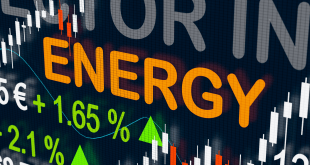The European Union’s latest round of sanctions against Russia, the sixteenth since the invasion of Ukraine, focuses on energy and metals, specifically targeting oil exports and aluminum imports. These measures introduce new complexities to already volatile commodity markets, raising questions about their ultimate impact.
Energy Market Under Pressure
The EU’s move to sanction an additional 73 vessels, expanding the existing list of sanctioned ships involved in Russia’s shadow fleet, aims to further restrict Russian oil exports. While similar US sanctions haven’t drastically reduced export volumes, they have led to an increase in floating storage, making buyers hesitant to accept sanctioned vessels. This hesitancy contributes to ongoing supply uncertainty in the oil market. Other factors, such as potential disruptions to Kazakh flows, uncertainty surrounding OPEC+ production, and weather events in the US, compound these concerns. These combined pressures have recently pushed ICE Brent prices above US$76/bbl.
A recent production dip in North Dakota due to extreme cold weather, with oil production down 120-150k b/d, adds another layer of complexity. While these disruptions are expected to be temporary, they highlight the market’s vulnerability. Countering these upward price pressures are potential restarts of oil flows from Iraq’s Kurdistan region, which have been offline since early 2023.
A resumption of these flows could add 300k b/d of supply to the market. However, the timing and certainty of this restart remain unclear, as does how Iraq would manage its OPEC+ production target if these flows resume. Market watchers like the American Petroleum Institute are closely monitoring inventory levels, with recent data showing a 3.3m barrel increase in crude oil inventories.
Aluminum Market Reacts
The EU’s ban on primary aluminum imports from Russia has triggered a notable, though ultimately short-lived, price surge in the aluminum market, with LME aluminum prices briefly exceeding $2,700/t. While the ban is significant, its impact is expected to be limited. European buyers have already been self-sanctioning since the start of the conflict, leading to a decrease in Russian aluminum imports. Russia’s share of European primary aluminum imports has already fallen to roughly 6%, half of what it was in 2022. This gap has been largely filled by imports from the Middle East, India, and Southeast Asia, a trend that is likely to continue. Simultaneously, Russia has redirected a larger share of its aluminum exports to China.
The EU ban, set to be phased in over a year, follows similar measures from the US and UK, which banned the import of Russian-produced metals in 2024. The EU had previously banned certain aluminum products, such as wire, tube, pipe, and foil, which represent a small fraction of total EU imports. Russia, as the largest aluminum producer outside of China, accounts for approximately 5% of global aluminum production.
The long-term effects of these sanctions on the global aluminum market will depend on how effectively alternative supply chains can meet demand and how Russia adapts its export strategy. The ongoing dialogue between the US and Russia, where sanctions relief has been suggested as a possible component of a peace agreement, adds another layer of uncertainty to the market outlook. The market is likely to remain sensitive to geopolitical developments and any shifts in the sanctions landscape.

 Noor Trends News, Technical Analysis, Educational Tools and Recommendations
Noor Trends News, Technical Analysis, Educational Tools and Recommendations




